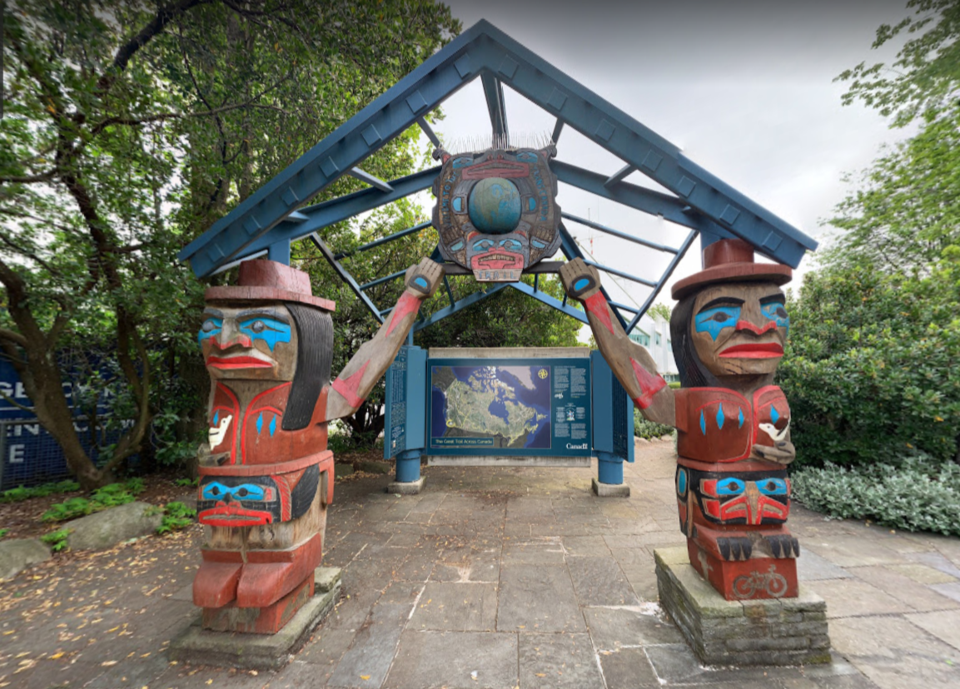North Shoreites are being encouraged to turn their winter pandemic blahs into ahhhs by getting outdoors and exploring The Great Trail of Canada (if you haven’t already).
The new nationwide Blahs to Ahhhs Winter Campaign, launched by Trans Canada Trail, is aimed at supporting Canadians as they navigate the coming months and look for safe outdoor opportunities to assist in coping with social isolation and managing physical and mental health.
Many Canadians have already turned to hiking and walking to improve their mental health during the pandemic, according to a national survey of Canadians on trail use, commissioned by Trans Canada Trail via Léger.
The survey showed that 50 per cent of Canadians have increased their trail use since March last year and also highlighted that 95 per cent of Canadians’ trail use is motivated by a desire to enhance their physical and mental well-being.
The world's longest network of recreational trails
Touching every province and territory and stretching for more than 27,000 kilometres, The Great Trail of Canada is the world’s longest network of recreational trails – linking over 15,000 rural, urban and Indigenous communities from coast to coast.
As 80 per cent of Canadians live within 30 minutes of the trail, Eleanor McMahon, president and chief executive of Trans Canada Trail said it offered a great outdoor recreation option close to home for many residents during pandemic restrictions.
“The Great Trail provides a safe space where they can spend time outside and recreate responsibly while respecting all public health guidelines,” she said.
“The impact of connection – to one another and to the natural world – is incredibly important. We are finding new ways to balance individual and community needs during this time. Keeping up a regular routine of activity and social connection while respecting public health directives is essential to maintaining overall health.”
'Breathe deeply and escape into nature'
Dr. Katy Kamkar, a clinical psychologist at Centre for Addiction and Mental Health, reinforced the push for people to spend time outdoors, saying research has continuously shown the benefits of exercise for mental health, self-care, and building resiliency.
“It is a proactive and healthy coping strategy that helps to boost our mood, enhance our cognitive function, regulate our emotions and increase our motivation,” she said.
“During what can seem like a very cold, long winter, I encourage you find your local trail and safely go for a walk. Take in the sights, breathe deeply and escape into all that nature has to offer.”
Where to find The Great Trail on the North Shore
If you’re unsure where to start your trek on The Great Trail, a handy interactive trail map has been created to show you where to go and offers information on the length and difficulty of paths along the way.
The Great Trail enters the City of North Vancouver along the Mosquito Creek Trail and is a 12.7-kilometre journey along the creek and down toward Burrard Inlet.
It goes through Mosquito Creek Park, then below Larson Avenue and continues along the creek before it crosses over Marine Drive. The trail then continues along a new section of trail adjacent to The Shore Development, under the West Second Street Bridge, before it dekes back up Bewicke to Third Street where it follows the new bike path along Third and down Forbes to Waterfront Park.
Trail users can also opt to head down Bewicke toward Burrard Inlet and follow the new section of Spirit Trail that passes through Mosquito Creek Marina. Whichever route you take, the trail ends up at The Great Trail Pavilion in Waterfront Park. The pavilion showcases bright First Nation totem poles by Squamish Nation carver Darren Yelton.
The West Vancouver 44.19-kilometre portion of the trail starts in Horseshoe Bay and travels along Seaview Walk, before either passing across the Upper Forested Lands to Cleveland Dam or along the lower route through urban areas. The upper route is for hiking and snowshoeing while the lower route is for cycling. Part of the trail is currently closed after a large tree fell on the trail bridge that crosses Lawson Creek along the Skyline Trail off Millstream Fire Access Road.
Anyone planning to head out on an outdoor adventure is advised to recreate safely, including physical distancing, wearing a mask when with someone from outside your household, washing hands frequently, and, when using trails, carrying hand sanitizer.
Elisia Seeber is the North Shore News’ Indigenous and civic affairs reporter. This reporting beat is made possible by the Local Journalism Initiative.



